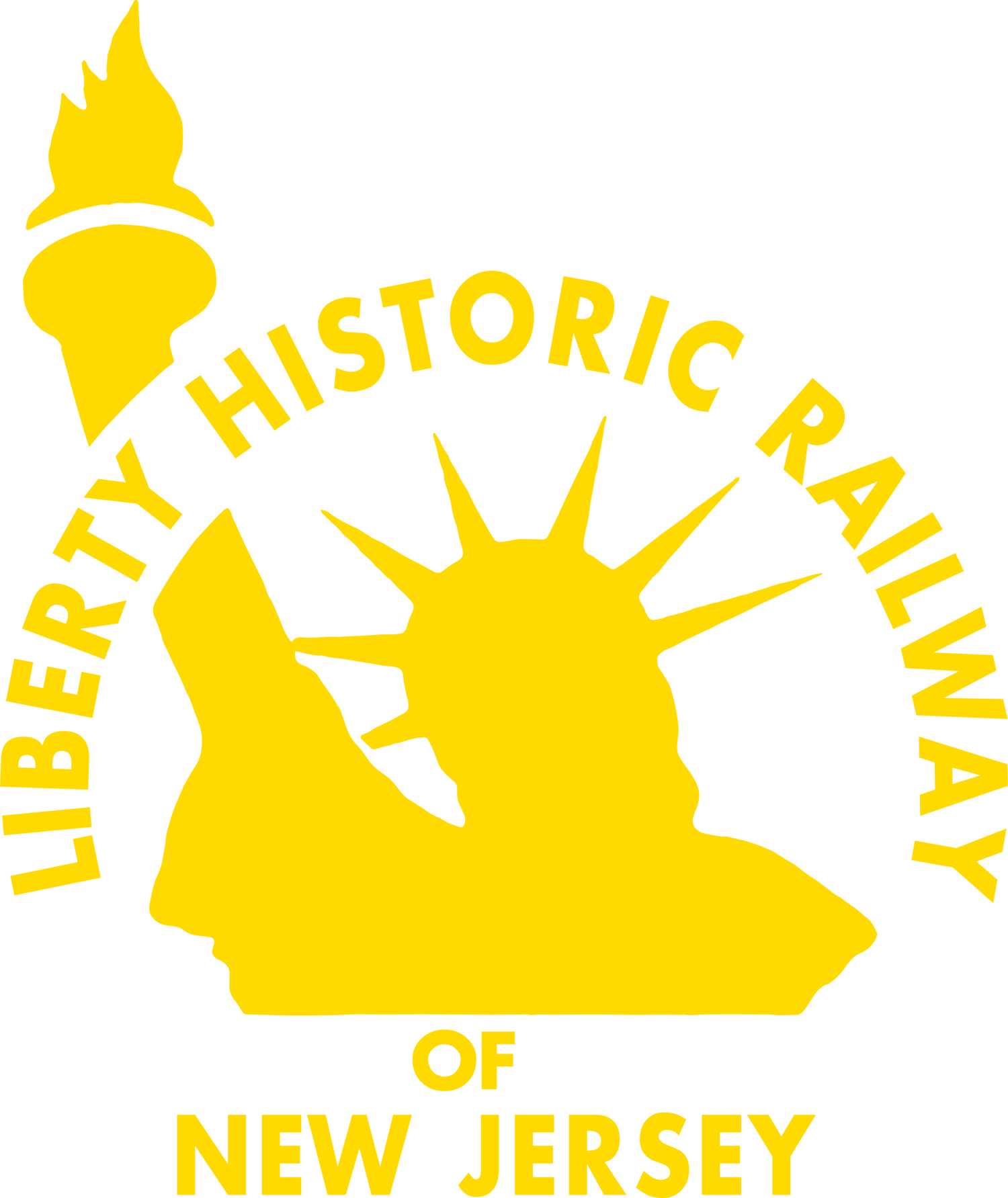Jersey Central Traction Company Operations in Perth Amboy
By Bill McKelvey
Introduction: The Jersey Central Traction Co. had its beginning in The Keyport & Matawan Street Railway which was chartered on 26 March 1891 to furnish service with horse cars between the two towns. They operated their first electric cars and adopted the Jersey Central (JCTC) name in 1901. The line expanded and became an important link in a continuous chain of trolley lines from Tenafly on the north to Sea Girt on the south, a distance of some 70 miles. In addition, because the PS Ry trolley gauge was the same, links also existed to the Paterson area, Bound Brook, and Trenton. The Jersey Central Traction Co. by Howard E. Johnston in The Marker, (No. Jersey Chapter, NRHS) Vol. 2, No. 3.
In 1911 the JCTC. built a bridge across the Raritan River from South Amboy and began providing trolley service between Keyport and the business district of Perth Amboy. Their line entered Perth Amboy where the Cornicopia Cruise Line is based, traveled north on Sheridan Street; east on Market Street, north on one block of Division Street (which at some point was renamed Davidson Avenue), and then, switched to the tracks of Public Service Ry to operate east on Smith Street, with trackage rights, ending at the ferry slip on Arthur Kill. Note that at the south end of Sheridan Street a paved walkway on the former trolley embankment leads south to the Cornicopia Cruise Line site.
In addition, JCTC also operated a Perth Amboy - Maurer shuttle entirely over Public Service Ry on trackage rights from Smith Street, north on State Street to end at Woodbridge Creek, for a total of 2.15 miles. It basically operated as a factory shift change car to connect with their Keyport cars on Smith Street. Public Service Ry required the JCTC car to use a coal stove for heat in the wintertime in order to conserve on electric power as was the practice for their own cars. The JCTC. cars were painted green with gold trim. Following several years of losses, a strike, and deteriorating maintenance, the company filed for abandonment and ceased operation at midnight on 28 July, 1923 - ending only a dozen years of trolley operation in Perth Amboy. Streetcars of New Jersey by Joseph F. Eid, Jr. and Barker Gummere.
Of particular interest to historians was the one block of trolley track on Davidson Avenue, on the east side of the former Public Service Perth Amboy carbarn, which remained in place for 103 years. It was double track north from Market Street to about 50 feet from Smith Street where it switched to single track just before connecting with Public Service Ry. This track was constructed on creosoted wood ties, using 70 lb. rail with bolted joints. Step rail was used on straight segments and girder guard rail was utilized on curved sections, with a manual switch just south of Smith Street. Belgian block was installed with mostly two rows parallel with each side of each rail. The balance of the roadway was apparently originally dirt. Over the years, asphalt paving was added where needed and this was patched and re-patched. The cumulative result was an undesirable, unsmooth surface.
In mid-2014 Lucas Construction Co. of Morganville, NJ, a specialist in heavy road construction and site development, was chosen as the successful bidder to remove the trolley tracks and re-pave Davidson Avenue. In summer a new gas main was installed between the track and the curb on the west side of the street. Lucas began removing track and pavement on the east side of the street on 18 September. When this was completed another Lucas crew came in and installed a new water main on the east side of the street. Next, the trolley track was removed from the west side of the street by the end of October. During this time, we managed to salvage about 500 Belgian blocks and a length of both the girder and step rail with a great deal of help from Ned Higgins and his American Industrial Supply, located in the adjacent former PS Ry carbarn. With help from Carmelo Harta and other AIS employees, we filled four tote pallets with the salvaged block. Lucas excavator operator, Mario Garganta, was very helpful - he frequently let us pick block out of his bucket before he dumped it. We are hopeful that the salvaged Belgian block will be reused in a Perth Amboy Transportation Heritage Park. We also salvaged about 80 of the original steel spikes which held the rail to the wood ties.
Ned’s workers dragged the two pieces of rail into the AIS warehouse, hammered the cement and heavily encrusted rust from the rail and cut it into small souvenir / display pieces. One piece of each section has been donated to the Perth Amboy Historical Society; one set is in the McKelvey historical rail collection; and the balance was donated to the North Jersey Electric Railway Historical Society for them to sell to raise funds for restoration of their trolley cars.
During November curbing and many sidewalk sections were replaced and Davidson Avenue was repaved, but, we have preserved a significant amount of the original 103-year-old trolley infrastructue.
